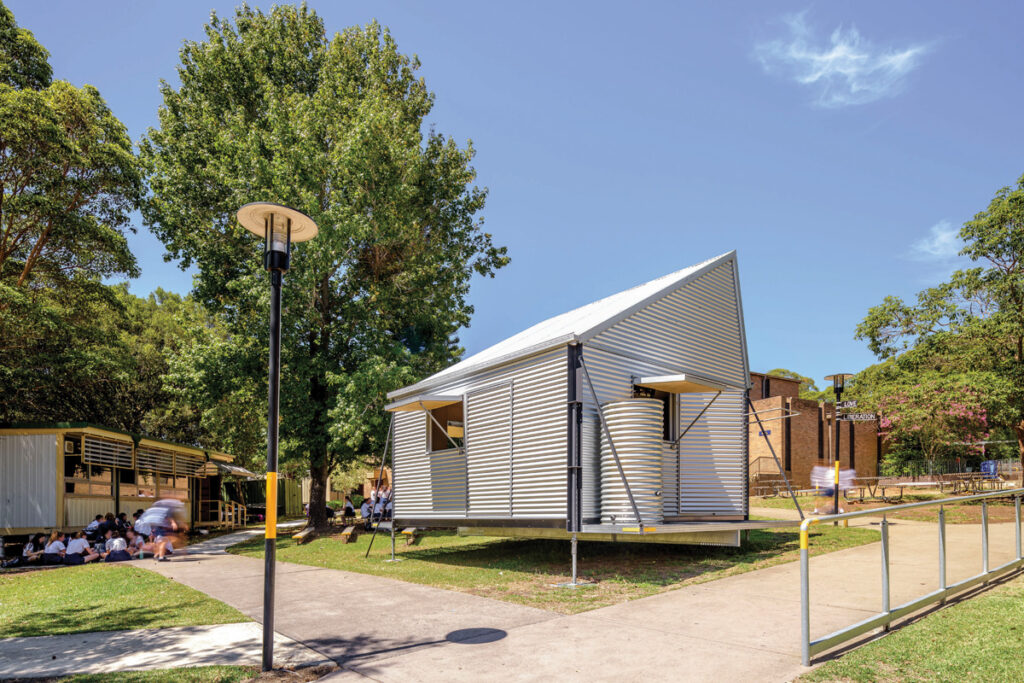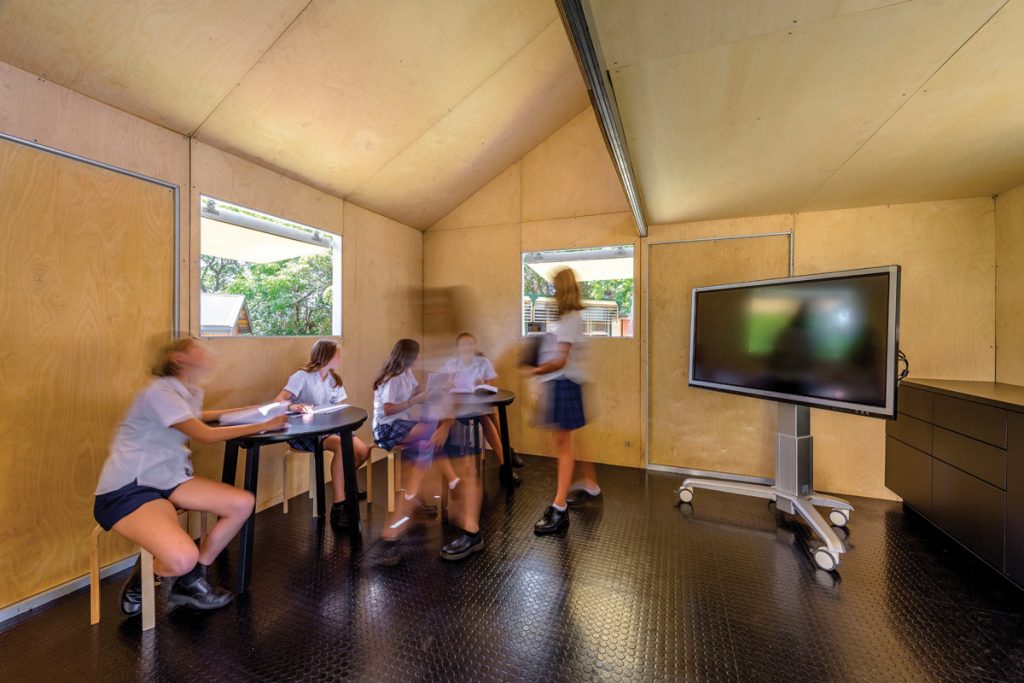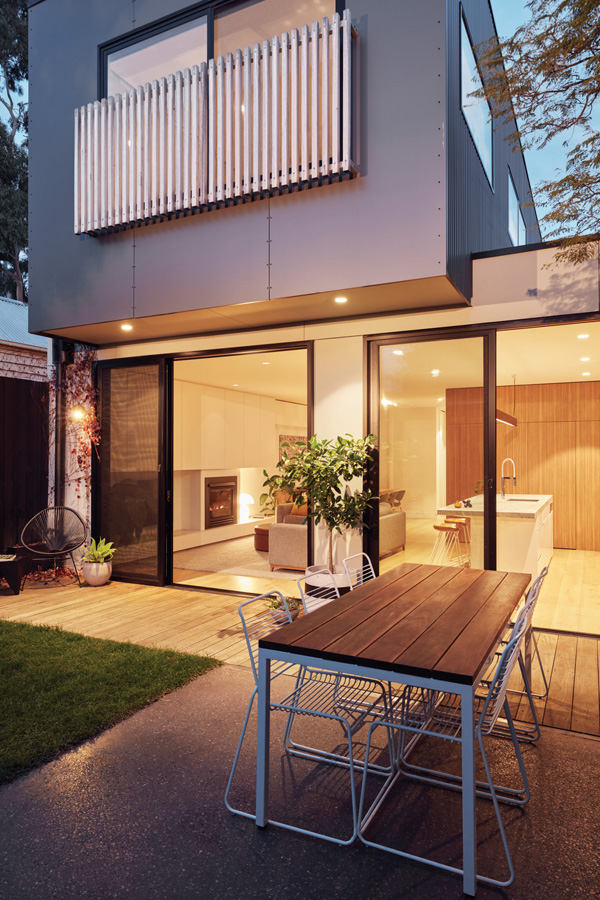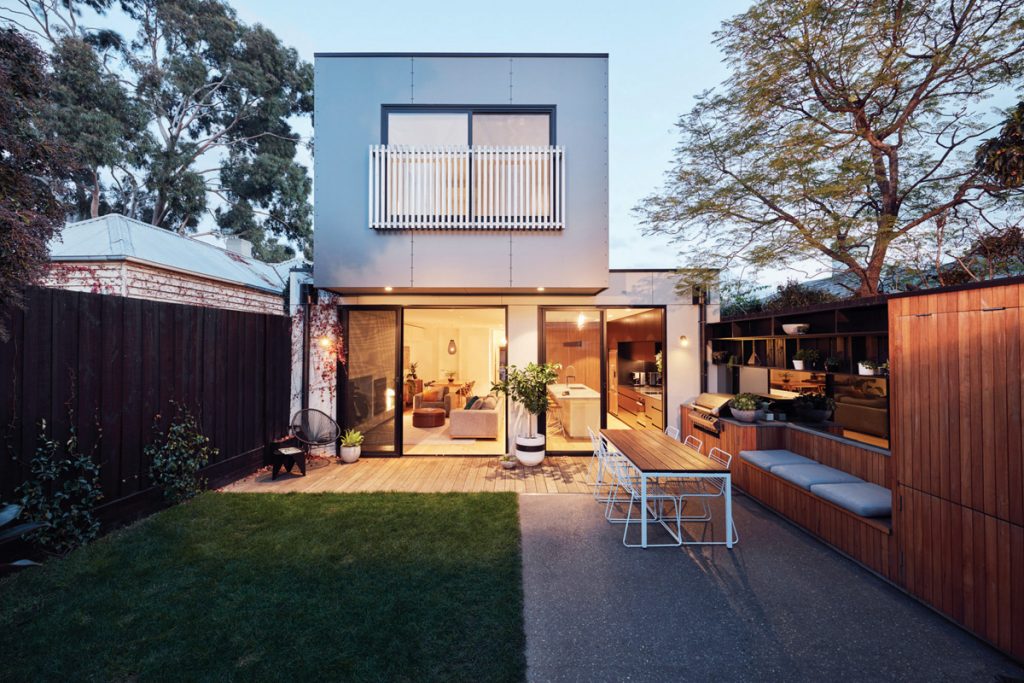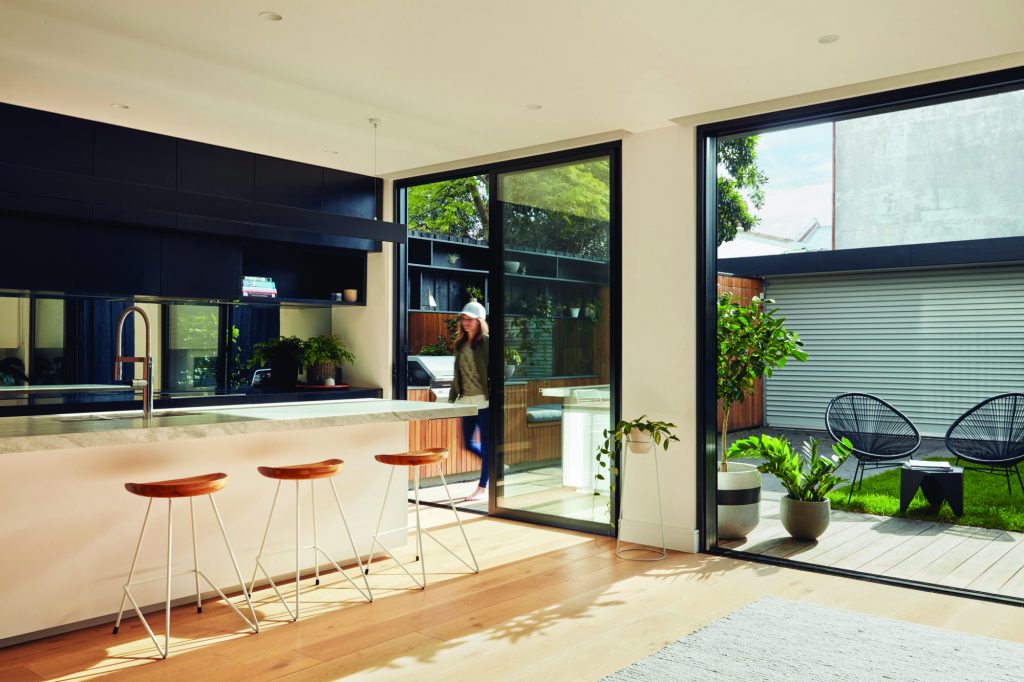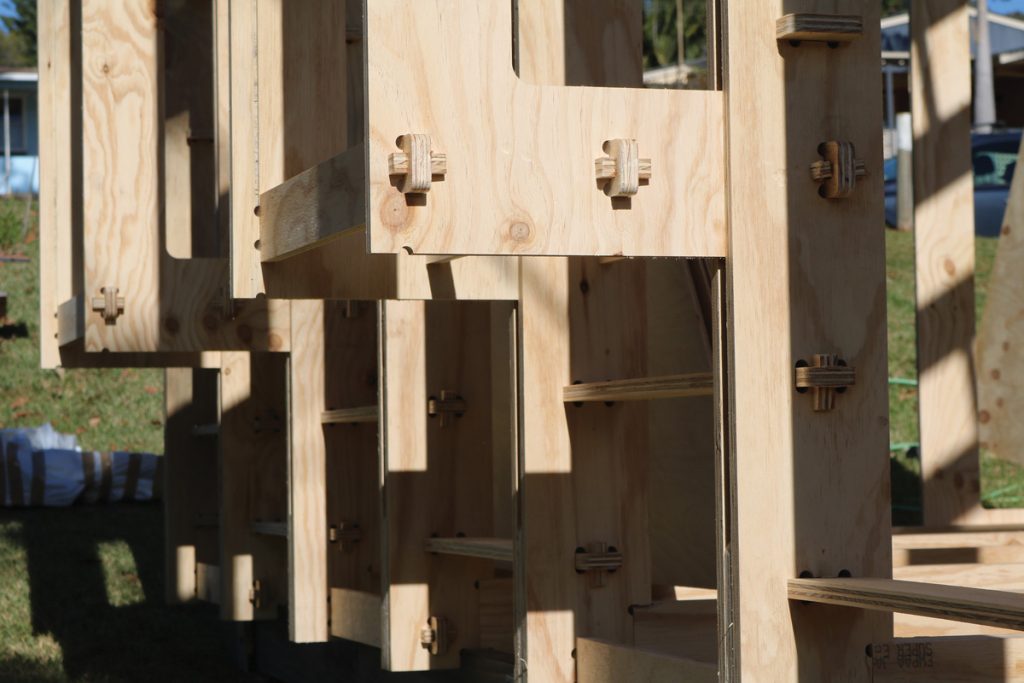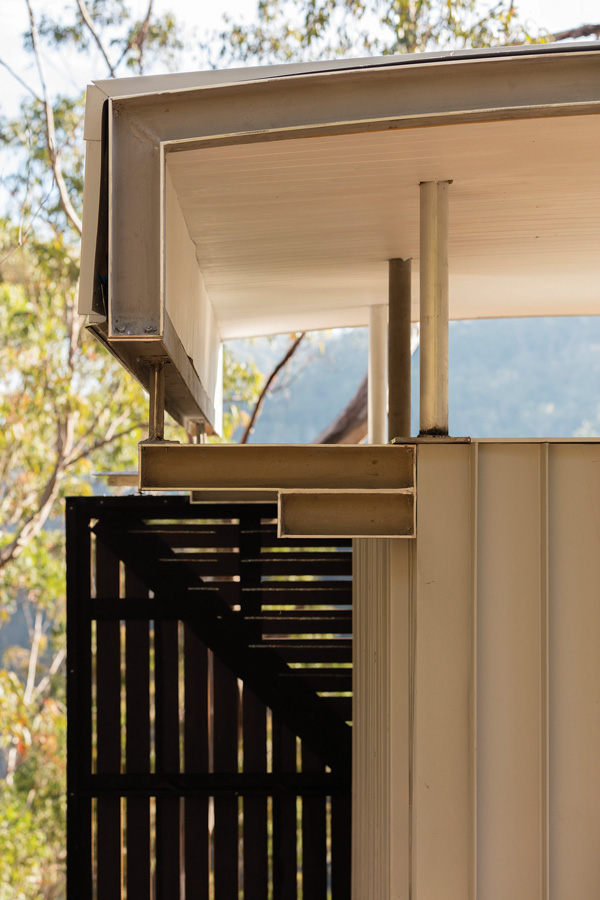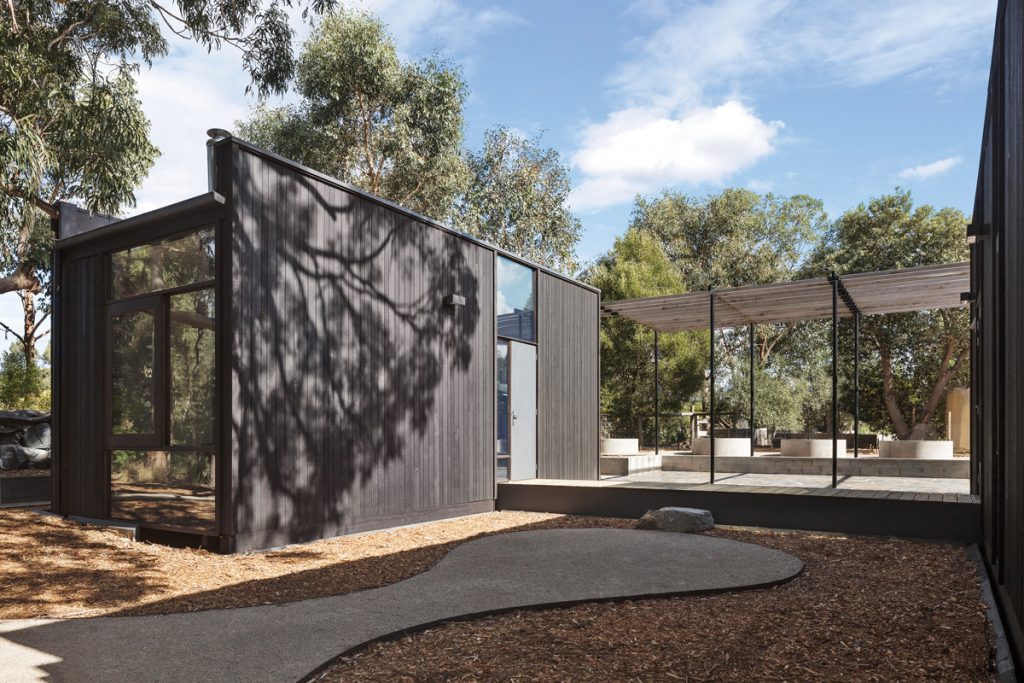Above and Beyond
Prefabrication (also affectionately referred to as prefab) continues to advance technologically, ever-reducing manufacturing and construction time and so lending itself to a broadening range of uses and settings. We’ve rounded up six of the best projects that prove just how versatile and sustainable prefab can be.
For education
Sustainable House was built by Carter Williamson at Burwood Girls High School in Sydney to inspire the school’s “Sustainable House” subject. “We were part of a jury reviewing their sustainable housing models and we thought there was a need to engage with the school [on a] deeper level,” explains principal architect, Shaun Carter. Originally conceptualised as a prefabricated, modular housing solution for disaster areas and refugee accommodation named GRID, Carter Williamson realised the project also had the potential to serve as an educational tool. “Something real, on-site, in a place that they physically can engage with,” says Shaun. Built in half a day by a team of ten, Sustainable House’s simple construction process also suits humanitarian applications. This project’s modest 11-panel composition belies its sustainable prowess; it comes equipped with photovoltaic cells, a roof-mounted solar hot water system and rainwater tanks to collect roof water, among other features. “[Students] can use it as a classroom, they can measure the water that’s collected from the building, they can measure the power that’s generated,” Shaun details.
For urban living
Prefabrication proposes inventive solutions to site restrictions, offering speed and convenience beyond the realm of traditional building methods. Bill McCorkell of Archiblox agrees, saying: “When I started, I thought prefab, by its nature, had to be limited – but as I go on, I find that is not the case. It’s only limited by our creativity.” From their facility in Laverton, Victoria, Archiblox has control over all stages of the construction process. “Constructing in our facilities means we have the ability to manage the day-to-day trades – the tilers, plasterers, etc. – who work on our homes so much more easily and [we can] ensure quality work,” says Bill. Their Richmond Extension project is demonstrative of this detail-oriented philosophy. Three modules were transported and craned onto this narrow site, an existing Edwardian house in Melbourne’s Richmond. The straightforward nature of the prefab construction process meant that the extension was completed expeditiously. And with a narrow street and neighbouring properties to be mindful of, and the clients having two children under five, prefab was just the right fit. Archiblox has achieved a seamless, sophisticated addition to this existing home that proves prefab’s design chops and aesthetic versatility. “Prefab’s not all about square boxes and conformity towards transport regulations and rules. Prefab is as flexible as your own imagination,” Bill notes.
For community
The IMBY (In My Back Yard) Kit was created by Adriano Pupilli Architects as a response to Nimbyism – an abbreviation for “not in my backyard” that references discontent surrounding the development of high-rise and large-scale buildings in neighbourhoods. IMBY Kit is designed to promote sustainable, incremental urban growth and empower neighbourhood inhabitants in the process. The kits are available in five models of varying sizes. So far, one has been built by Adriano along with colleagues Matt Ryall and Ben Muir. This IMBY is clad with charred western red cedar weatherboards, which Adriano reveals were achieved after “19 hours with a blow torch and a bunch of LPG bottles! Good winter activity.” IMBY’s modular structural frame means that the kits can be extended, and they’re made up of interlocking mortise and tenon joints. Sustainability is articulated here in maximising use of materials and minimising costs and waste. Machine efficiency manages repetitive tasks and by cleverly “nesting” multiple parts on a 1200 by 2400 standard building sheet (like sustainably-grown plywood) the most is made of the material. Adriano sees this project as a marriage of past and present design approaches, saying: “IMBY encapsulates the simplicity of ancient woodworking techniques with the efficiency and sustainability of digital fabrication and renewable resources.”
For work
Scott Flett of Flett Architecture reflects on his decision to make 1:1 Scale Model as “one part spare building materials, two parts risk management”. This project was conceived with more than one aim in mind: it would serve as a model for the parts and finishes of his parents’ upcoming home in Tasmania and be used as Scott’s own site office. Prefabricated in Sydney and flat packed on the tray of a ute, it was installed at Mount White on the central coast of NSW. “I like to think of this as less of a site office, and more of the ultimate backyard shed. Just that I’ve been taking my shed with me to work,” Scott muses. For this project, Scott adopted a resourceful approach. The timber screens were made of recycled tallowwood left over from a large deck installation; the front door was a manufacturing reject from a studio in Royal National Park; the stud walls were reconditioned from a Newtown church and, inside, the desk and chair were found in the most providential of treasure troves: hard rubbish collection. Behind the scenes, Scott took the opportunity to experiment. The prefabricated metal structure is composed of 45 marine-grade, structural aluminium alloy members. And as for his parents’ response? An emphatic approval: “Mum likes the timber screens, and Dad’s pretty impressed with my welding.”
For escape
Prefab can be as inventive as it is practical. Take, for example, this residential project in Shoreham by ARKit, a coastal retreat built as a panellised structure in a clever response to difficulties posed by the site. “Delivery of large modules was not an option,” shares Craig Chatman, ARKit Director. “We prefabricated complete floor, wall and roof components off-site and installed the bulk of them in one day.” ARKit is committed to innovation and examining the potential of bespoke prefab beyond residential applications. Their canon of sustainable projects includes the Eco Studio: Australia’s first carbon neutral prefabricated building and, currently in the works, what Craig says will be “Australia’s most environmental dwelling” – to be certified according to the Living Building Challenge and Passivhaus programs. The latter project exemplifies how technology can accomplish unparalleled precision in prefab developments. ARKit has used BIM (Building Information Modelling) software to ensure that the design, construction and completion processes of this structure are “efficient and lean”. Craig summarises ARKit’s exploratory approach best, and with tangible vigour: “[Prefab has] boundless manufacturing possibilities.”
For retreat
Retreat in Finca AGUY by MAPA Architects is located in Pueblo Edén, Uruguay. This 115-square-metre project was designed to make the most of the surrounding landscape and the site’s scenic position on the edge of an olive field – a goal that its openablefaçade most certainly achieves. The structure was manufactured in a factory near Montevideo and was then transported 200 kilometres to site. MAPA Architects summarise the project thus: “[The] perfect combination of industry and landscape: new kinds of landscapes deserve new ways of dwelling.” Prefab was selected for this project because of its precision and reduced environmental impact. In such a natural, undulating landscape, MAPA Architects understood that their architectural response had to be restrained and uncomplicated – the speed and ease of construction, along with waste minimisation offered by prefab proved the perfect solution.
